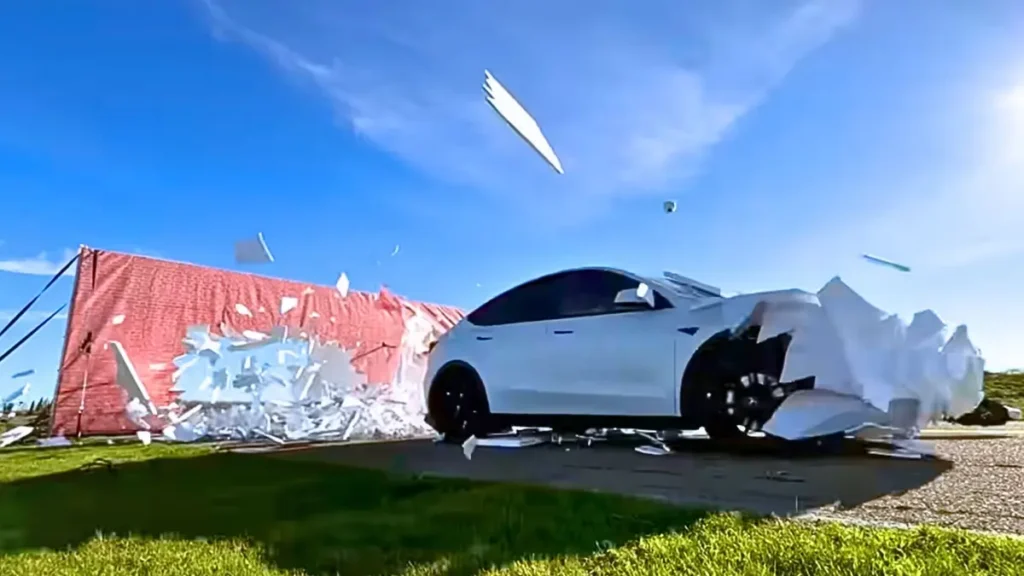Islamabad, Mar 18, 2025: Self-driving technology aims to create safer roads, but how well do these vehicles handle unexpected scenarios? One bizarre experiment tested autonomous cars with a classic cartoon-style trick—an optical illusion designed to make them crash.
The results revealed surprising weaknesses in some of the most advanced self-driving systems.
The Cartoon-Inspired Challenge
While painted fake walls aren’t a real-world hazard, YouTuber and ex-NASA engineer Mark Rober set out to test whether self-driving cars could be deceived in a way similar to Wile E. Coyote’s iconic attempts to trap the Road Runner.
His latest video, “Can You Fool a Self-Driving Car?”, compares Tesla’s camera-based Autopilot with a competitor’s LiDAR-based system.
Each was subjected to a range of tests, including the ultimate challenge—a false road painted onto a wall.
Crashing into Illusion at 40 MPH
When approaching the fake road at 40 mph, Tesla’s Autopilot failed to recognize the obstacle, crashing through the illusion and leaving a massive hole in the wall.
This was one of several tests where the Tesla system underperformed.
Earlier experiments evaluated how these vehicles responded to a stationary child mannequin in clear conditions versus scenarios with fog or water spray.
Read More:
Auto Financing Jumps in February Amid Lower Interest Rates
Tesla’s system successfully avoided the mannequin in perfect visibility but failed when visual obstructions were added, running straight through.
On the other hand, the LiDAR-based system excelled in every test, detecting the dummy even in poor conditions.
LiDAR technology, which uses laser scanning to create a 3D map of the surroundings, proved more reliable in difficult environments.
The Tesla Vision Controversy
Tesla has made a bold move by eliminating LiDAR from its self-driving approach, relying entirely on cameras and neural networks.
The company argues that LiDAR is costly, computationally demanding, and unnecessary for fully autonomous driving.
However, experiments like these highlight potential safety concerns, raising questions about whether camera-based systems alone can match the precision of LiDAR.
As autonomous vehicle technology evolves, the debate between LiDAR vs. camera-based systems continues.
While Tesla pushes forward with vision-based AI, others argue that a hybrid approach could offer the best safety outcomes.
This experiment suggests that, for now, LiDAR still holds a critical advantage in detecting obstacles under challenging conditions.
